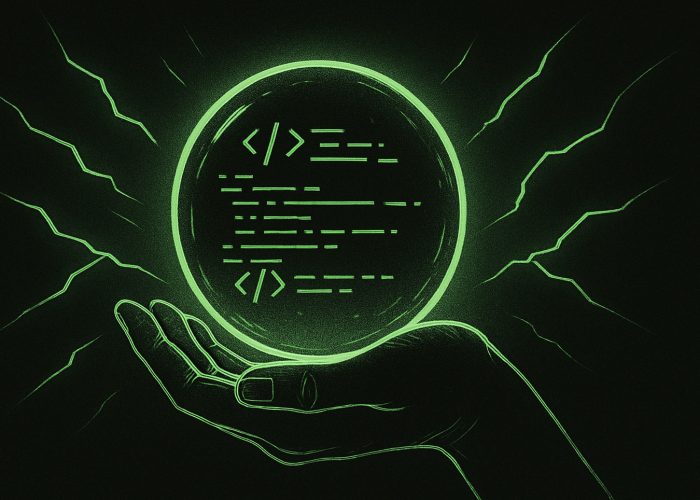A growing number of cybersecurity threats make companies toy7gguh be on the lookout. More sophisticated cyberattacks have been aimed at the data and assets of corporations, governments, school systems, utilities, and financial institutions. As our reliance on technology increases and a new remote workforce emerges, so the volume of cybercrimes is growing.
With increasing boldness, hackers are evolving their strategies. Proper planning and cybersecurity processes must include a well thought out Incident Response Plans (IRP) so IT teams know how to respond when a security breach happens. So here are the top ten cybersecurity threats 2022 for business to be aware of:
- Ransomware & Malware
According to Cybersecurity Ventures, Ransomware is predicted to hit $11.5 billion in damages. The current threat volume translates into a new victim every 14 seconds. Ransomware has grown to be one of the biggest problems on the web. The ransom payment is only one part of the impact. The loss of productivity, system downtime, the cost of rebuilding systems and replacing the hardware all impact a company’s ability to survive after an attack.
- Endpoint Attacks
As more companies move resources into the cloud and rely on remote workstations, the attack surface increases. With more companies creating “bring your own device” policies and adopting SaaS platforms, hackers have more targets to pursue. The challenge is how best to secure these off-premise systems and personal devices. Endpoint attacks are frequently used by cybercriminals to gain access to larger networks. By requiring endpoint devices to meet security standards before being granted network access, enterprises maintain greater control to effectively block cyber threats and attempts. Endpoint Detections and Response (EDR) has become a technology must to address the growing threat to remote workers and IoT devices.
- Phishing
Phishing and Business Email Compromise continue to be the most popular, low-tech approach cybercriminals use to gain access to networks. Phishing emails look like normal, every day emails from companies, executives and trusted peers. By clicking on malicious links or providing information on imposter landing pages malware is loaded onto devices allowing cybercriminals to gain access to sensitive networks. With the widespread use of cloud services like Gmail, and Office 365, hackers are becoming more sophisticated with their impersonation and social engineering skills. Cloud services cannot adequately protect your sensitive data. Adopting additional email security measures with encryption and threat intelligence is a smart way to protect employees from sophisticated email attacks.
- Third-Party and Supply Chain Attacks
A supply chain attack, also known as a third-party attack, is when a cybercriminal uses the vulnerability of an outside supplier’s security system to gain access to a larger organization’s network. According to the Ponemon Institute, 75% of IT professionals surveyed acknowledged the risk of a breach through a third party is dangerous and increasing. More specifically, 63% of all data breaches can be linked either directly or indirectly to third-party access according to Soha Systems.
- Machine Learning and Artificial Intelligence Attacks
While Machine Learning and Artificial Intelligence are being used by cybersecurity companies, it is also being used by cybercriminals to launch attacks. With these tools, attacks can be multiplied and sped up to gain access to critical networks and sensitive databases. The impact of these attacks is already being seen. According to CSO Online, many of the most recent large-scale attacks have been AI and Machine Learning driven.
- IoT Attacks
The use of the Internet of Things (IoT) is growing each day (according to Statista.com, the number of IoT internet-connected devices is expected to reach almost 31 billion). IoT includes everything from laptops and tablets, to routers, webcams, household appliances, smartwatches, medical devices, manufacturing equipment, automobiles and even home security systems. More connected devices mean greater risk. Once controlled by hackers, IoT devices can be used to overload networks, tap into sensitive data or lockdown essential equipment for financial gain.
- Inadequate Patch Management
The purpose of a patch is to eliminate a “hole” or vulnerability in software or hardware programs. Manufacturers release patches to address vulnerabilities in their operating systems, software, and other technologies. Patches are essential to the security of your business — yet, patching largely gets ignored both by users and IT security teams. Often, there are other more pressing IT responsibilities to manage. Regardless of the reason, a lot of technology remains unpatched, leaving businesses and their data vulnerable to even the most basic of cybersecurity threats.
- Formjacking
Formjacking is just how it sounds. Formjacking is a type of cybersecurity threat where a cybercriminal takes over the forms on a website. In many cases, cybercriminals hijack the checkout page on eCommerce sites to steal financial information and credit card numbers. The goal is to skim valuable data submitted on the forms. Othertimes, cybercriminals will use chatbots to target their attacks. Symantec’s Internet Security Threat Report shows formjacking dramatically increased. The report showed an average of 4,800 websites are compromised with formjacking code each month.
- Cryptojacking
Cryptocurrency, also known as online currency, affects cybersecurity. Cryptojacking involves cybercriminals hijacking third-party home or work computers to “mine” for cryptocurrency. Because mining for cryptocurrency requires immense amounts of computer processing power, hackers make money by secretly piggybacking on someone else’s systems. For businesses, cryptojacked systems cause serious performance issues and costly downtime as IT teams track down and remove cryptojacking code.
- A Severe Shortage of Cyber Security Professionals
The rate of cybercrime is forcing companies and governments to scramble to hire enough qualified cybersecurity professionals to deal with the growing threat. This shortage is expected to continue with some estimating more than 1 million unfilled positions worldwide, potentially growing to 3.5 million by the end of the year.




